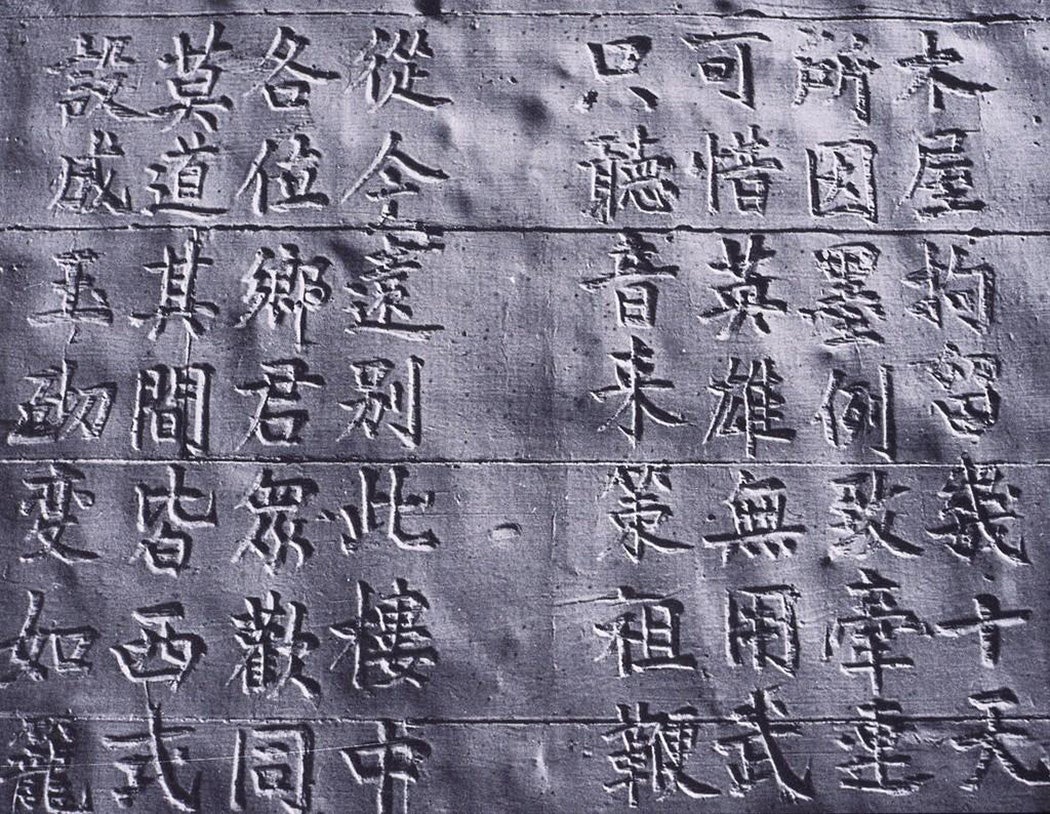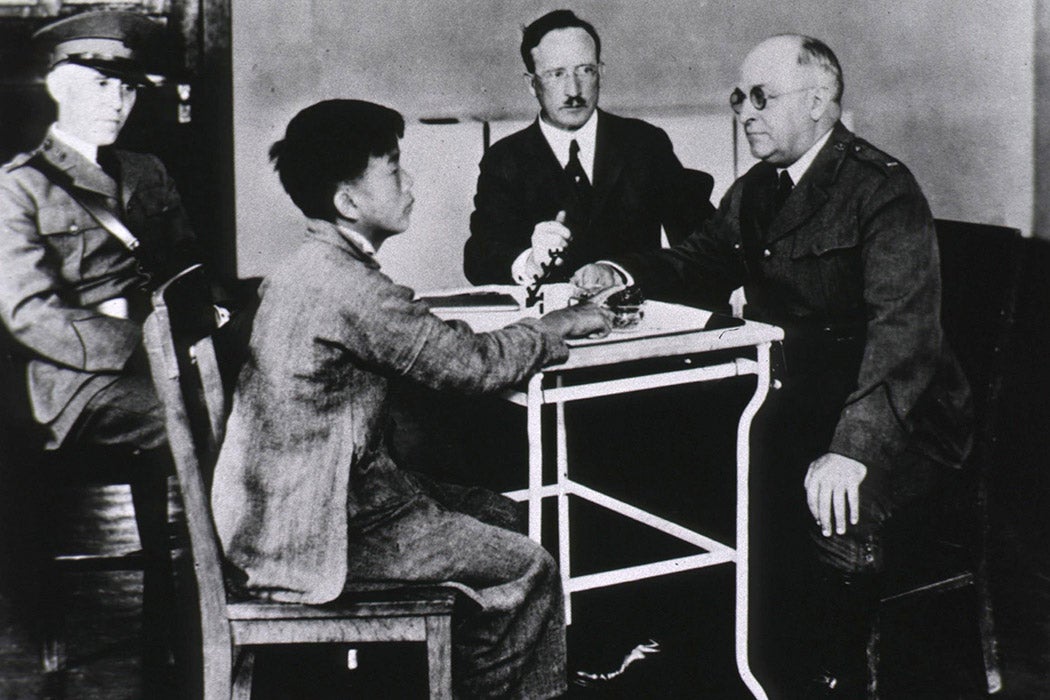Between 1910 and 1940, thousands of Chinese immigrants were detained—sometimes for months—in facilities on Angel Island, off the coast of San Francisco.
Stuck in immigration limbo, living under difficult conditions, some turned to poetry to express their despair, worry, and anger. And, by etching their words into the walls of the detention center, these early arrivals left a literal mark on America.
The Angel Island poems were rediscovered in 1970 and brought to public attention by advocates like Him Mark Lai and Judy Yung, who, with poet Genny Lim, compiled the collection Island: Poetry and History of Chinese Immigrants on Angel Island, 1910–1940. Lai’s research in California History reports more than 130 different poems, including pieces that were not recovered from the walls but had been copied and preserved by detainees.

In an article in Transformations: The Journal of Inclusive Scholarship and Pedagogy, R. John Williams argues that, when the Angel Island poems are taught in English translation, students and teachers need to keep in mind the history of Chinese-language poetry in English—in particular, the literary afterlife of Ezra Pound, a leading American modernist in the first half of the twentieth century, and, more sordidly, a noted Fascist sympathizer.
Despite not actually knowing Chinese, Pound successfully published so-called “translations” that Williams says have “profoundly influenced American poetry and American images of ‘the’ Chinese poem.” As such, Williams explains, “What students must understand before examining the Angel Island poems as translations is that, since the early twentieth century, any discussion of translating Chinese poetry has, for better or for worse, necessarily involved the ‘Imagist’ innovations of Ezra Pound and his ‘translations’ from the Chinese.”
Juxtaposed with Pound, he finds that reading the translated Angel Island poems conjures up an ironic contradiction: that “at the precise moment that Pound and other modernists were professing an intense desire to access the exotic textual wisdom of the East, they were closing their eyes to the literal incarceration and forced exclusion of Chinese bodies.”
While Lai describes the Angel Island poems—which were “usually undated and anonymous”—as largely written in the classical style of the Tang dynasty, Williams remarks that “the rhythms are sometimes irregular, the constructions loose, and the imagery occasionally forced.” He argues that “this looseness in rhythm only means that these particular Chinese-language poems more closely resemble the free-verse forms of Pound’s translations than did the actual Chinese poems he was reading.”
He adds, “It at least makes good ‘intertextual’ sense to associate Pound’s translations with the poems on Angel Island. Many of the poems Pound was translating were held in the memories of Angel Island detainees, and were often referenced in their own poetry.”
“I shall never forget the sad emotions that overwhelmed me as I walked through the dark, empty rooms trying to imagine what this place meant to the countless number of Chinese immigrants who had passed through,” Yung wrote in 1977, two years after a visit.
Weekly Newsletter
“I was most touched by the many poems, like those above, still visible on the walls: a testament to the sufferings of our parents and grandparents, some of whom are still alive.”
Reflecting on the classroom experience of reading Pound alongside the Angel Island poets, Williams believes that comparison helps his students to “see the more complex historical matrix of a text’s formal production,” including the limits and opportunities of translation.
Support JSTOR Daily! Join our new membership program on Patreon today.







